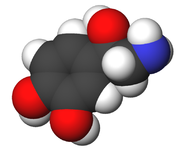Pharmaceutical Processing predicts the market for fibromyalgia drugs will grow to 1.9 billion dollars a year by the 2023. The basis for their predictions are the introduction of generics for currently approved FDA drugs for FM and the introduction of four “new” drugs; two of which are reformulations of older drugs.
Please note that this is only a list of drugs and does not include other therapeutic approaches are being tested. It is also not a complete list of drugs being tested in FM. Nor does it include other drugs under development for other conditions that may be useful in fibromyalgia or ME/CFS. Many of the drugs probably being used to treat fibromyalgia or ME/CFS are not FDA approved for those conditions. This is list of drugs that drug companies are willing to invest an enormous amount of money in in expectation they will be specifically approved for fibromyalgia. It’s a very specific list and does not reflect other treatment possibilities that will show up over time.
Check out the four drugs currently in the FDA’s pipeline that Pharmaceutical Processing believes will be approved for FM over the next eight years.
The 1,000 Person Fibromyalgia Trial
DS-5565 or mirogabalin is, like Lyrica and gabapentin, a calcium channel blocker. It outperformed both Lyrica and gabapentin in treating diabetics with neuropathic pain in a five week phase II trial. It was able to do so in much lower doses than Lyrica (300 mg) and at a wide range of doses (15, 20, and 30 mg).
Mirogabalin didn’t remove pain in these patients but it did appear to lessen it more significantly than Lyrica. About 40% of mirogabalin recipients (vs 28% of Lyrica and 24% of placebo) achieved a 50% or more reduction in pain. About 60% of mirogabalin recipients achieved a 30% or better improvement in pain (vs 38% of Lyrica and 42% of placebo).
The fact that Lyrica did not perform better than placebo in the trial raised concerns however, because Lyrica has been able to consistently do so in the past. Lyrica may have failed the test because the trial was so short. In a longer trial it’s efficacy and the difference between its effectiveness and mirogabalin’s might have been reduced. Observers asserted that a much longer trial (12 weeks) is needed to establish mirogabalin’s efficacy.

Mirogabalin’s more specific targeting of calcium channels may spell improved efficacy and reduced side effects
The low doses of mirogabalin needed suggests efficacy may have been improved and could perhaps indicate side effects – a major concern with Lyrica, – may be reduced. Both mirogabalin and Lyrica bind to alpha-2-delta calcium channels but mirogabalin binds to a subunit of those channels believed to be involved in producing pain while Lyrica binds to two subunits, one of which is involved in central nervous system functioning. It’s that second subunit that’s believed by Daichi Sankyo, the maker of mirogabalin, to be producing the high rate of side effects in Lyrica. With mirogabalin targeting the first ion channel subunit only, Daichi Sankyo hopes to provide a drug with fewer side effects.
Dropout rates in the 450 person phase II trial were considerably lower for mirogabalin (18%) than for Lyrica (27%) and not that far off from the placebo rates (13%).
Clinicaltrials.gov indicates mirogabalin is being tested in a 1,000 person multi-site fibromyalgia trial
- Start Date: January 2015
- Completion Date: August 2017
- SM_DS5565_FM_Info@incresearch.com
TD-9855 – An NSRI (SNRI) – That Works?
Theravance calls TD-9855 a “novel norepinephrine serotonin and reuptake inhibitor” or NSRI. The goal of these products is to inhibit NE and serotonin uptake in the brain. That leads to increased norepinephrine and serotonin levels in the brain.
Two SNRI’s – Cymbalta and Savella – have been FDA approved for fibromyalgia. SNRI’s promote higher serotonin activity than do NSRI’s such as TD-9855. They have not done particularly well in FM. A Cochrane meta analysis concluded they provide only small improvements in pain and fatigue and QOL and can have significant side-effects.
Theravance’s product enhances norepinephrine more than it does serotonin. The company proposes it achieves a unique balance of activity between norepinephrine and serotonin and has the potential to treat a range of central nervous system conditions including chronic pain. Several drugs under consideration in FM target serotonin and norepinephrine pathways including the sublingual formulation of Flexeril and the Ketamine analogues under production.
Theravance reported TD-9855 is able to reduce pain activity in a range of pain models including acute inflammatory, neuropathic and osteoarthritis pain. That’s an interesting finding given that these types of pain are produced, at least in part, by different pain pathways in the body. Although the drug does not interact with opioid receptors it can enhance the effects of opioids such as morphine – resulting in lower needs for opioid drugs. The drug may also be able to reduce fatigue.
The company’s Vice President of Research director, Mattei Mammen stated:
“We believe TD-9855’s balance of inhibition of norepinephrine and serotonin reuptake may provide a compelling and differentiated profile versus current alternatives.”
This drug type’s record is not particularly good in FM but Theravance’s product is a bit different. Time will tell if Theravance’s new drug will have better results.
Sub-lingual Form of Flexeril – First Drug to Fight Non-restorative Sleep?
Cyclobenzaprine is usually used to reduce muscle spasms. So what’s it doing in a fibromyalgia sleep study? Cyclobenzaprine (brand names Amrix, Flexeril and Fexmid) is ordinarily used as a muscle relaxer medication to relieve muscle spasms and reduce pain. It’s often used off-label for fibromyalgia but has no proven benefit after about two weeks.
We’ve seen how low dose naltrexone (LDN) has a different mechanism of action than regular dose naltrexone. Tonix Pharmaceuticals hopes the same pattern rings true for very low dose cyclobenzaprine (VLDC). They believes a sublingual form of cyclobenzaprine will be the first drug to reduce the problem of non-restorative sleep in Fibromyalgia. (Non-restorative sleep is also the main sleep issue in ME/CFS (chronic fatigue syndrome)
Dr. Daniel Clauw, fibromyalgia expert believes the new drug might work. He stated that:
“the efficacy and tolerability profile of TNX-102 SL as demonstrated in prior clinical evaluations supports this candidate as a promising treatment for fibromyalgia.”
An earlier trial found that very low dose cyclobenzaprine (1-4 mgs) before bed-time significantly improved pain, tenderness, and depression in FM over eight weeks. The trial suggested that very low doses of the drug ( it’s usually prescribed for 5 mgs/3x’s a day) can be used for longer periods when treating sleep in FM. An EEG indicated that significantly more people taking low dose Flexeril had increased nights of restorative sleep. The increased restorative sleep was, in turn, correlated to improvements in fatigue and reductions in depression.
Muscle spasms and tightness can often increase during sleep but the mechanism by which the drug is working appears to be different. The authors of the study suggested that the drug was affecting serotonin levels (and reducing glutamate expression) and sympathetic nervous system functioning. They noted that genetic linkages have associated FM with genes encoding receptors for these areas. Increased sympathetic nervous system functioning has been associated with poor sleep in ME/CFS.
Now Tonix has produced a sublingual form of the drug. Tonix CEO Dr. Seth Lederman stated
“We are proud to be developing a new prescription medicine for people suffering from a condition that, despite its prevalence, remains inadequately addressed. If approved, we believe TNX-102 SL would offer a clinical profile that would be highly differentiated from currently-marketed drug products, and would be the first medicine for fibromyalgia to target non-restorative sleep.”
The company is opening a large trial in 35 sites.
Cntact Mark R. Schmal via e-mail mark.schmal@premier-research.com or + 1 512 852 6912. For a list of the 35 study locations recruiting participants go here.
Time-Release Formulation of Lyrica
A long lasting, controlled- release formulation of Lyrica is probably furthest along of any of these drugs and it needs to be. Lyrica will be going generic soon and Pfizer, it’s manufacturer, is seeking a way to boost the sales of its top selling drug. Pfizer’s bottom line has already been hurt by generic versions of Lyrica appearing in the UK and some European countries.
This formulation would allow patients to take one tablet of Lyrica a day.
Pfizer reported the results of the second of three phase III trials in four countries of Lyrica CR in fibromyalgia in 2012. Almost 30% of the participants (28%) achieved a 50% or more reduction in pain – a good result in this disease. The big knock on Lyrica, however, has been the high incidence of side effects. When Lyrica works it works well, but side effects prevent some who might benefit from using it.
Unfortunately, nothing in the data I could find suggests the new formulation will have different side-effects from the old formulation. Greater than 5% of subjects experienced dizziness, somnolence, peripheral edema, insomnia, headache, fatigue, nausea, weight increased, vision blurred, dry mouth, and disturbance in attention in the recent trial.
Lyrica may be facing a stiff challenge from mirogabalin in the future.
The Missing Drug?
Pharmaceutical Processing didn’t mention the Pridgen trial of Famvir and Celexicob but the phase II trial had better success than other FDA approved drugs have. Find out more about that trial here.









Hi Cort hope your well. I don’t mean to offend anyone but I think we are going to have to stop putting fm with cfs. Unless fm patient has cfs then unfortunately it makes cfs look a lot tamer and we get bunched together again. The problem again is we are bunched in to much and it hurts our efforts to be taken has seriously and doctors and average joes don’t understand how serious cfs is. Sorry but that’s how I see it. I know there are similarities but we have similarities with a lot of diseases that are much more serious and will help us with proper funding.
Jimmy, I led an FM ( later included CFS/ chronic pain) for 13 years. Every single person had significant, life-altering fatigue and multiple neurological issues. Unfortunately, FM gets”billed” as just a chronic pain issue.
I went to the international CFS meetings in Reno (2009?) and spoke to many ‘CFS ‘ patients. Virtually everyone had some level of pain, and a similar profile to the FM group.
I was initially dx with fibromyalgia because I went to a rheumatologist, and that is what he was diagnosing. I had been totally bed-ridden for 1 year with severe fatigue, and no body system working correctly. I had immune system irregularities – elevated tumor necrosis factor alpha, elevated complement, some interleukin abnormalities.
There were multiple people in my group dx with FM who also had lupus or Ehlers Danlos Syndrome. Ha! I had about 3 people who had been dx with a syrinx, which is a fluid -filled cavity in the spinal cord, ie syringomyelia. Then the neurologists referred them to a rheumatologist to see if they had fibromyalgia. Syringomyelia is KNOWN to cause any symptom except disturbance of sense of smell – including terrible pain/fatigue.
WHY would any doctor try to add some diagnosis of FM or CFS when a patient already had a dx -SEEN on MRI ! – known to cause all the symptoms we have? Seems crazy to me. Thank you, Jimmy, for bringing up such an important topic.
Potential drugs for FM, what about drugs for CFS? Fatigue and brain fog are my key problems. Although I meet criteria for FM, I have high pain tolerance and pain does not affect my overall functioning. I take nothing for it, but I do see a chiropractor. We need medications that will effectively treat the fatigue, and severe brain fog.
Hey Barbara – no drugs in the pipeline specifically for ME/CFS….These are drugs the companies are spending many millions of dollars to get approved for FM. There’s only a few of those for FM and none for ME/CFS – except for Ampligen which I hear is still in play…
The drugs that end up working for ME/CFS will come from drugs being developed for other conditions right now (or Ampligen) or from repurposing drugs for ME/CFS as Solve ME/CFS wants to do and as Dr. Klimas is looking for. If you have a viral infection CMX001 might be an instance of a drug developed for something else which might apply.
Thanks for the feedback Cort.
Cort, you consistently amaze me that you can decipher and put together all this great information for us. I’m sure glad your brain still works (mine doesn’t) because you are a treasure to our community.
:). Thanks
I guess we all feel slighted at times. I am thinking 2023 for Fibromyalgia, gee thanks! And then last October when a VA Doc failed to tell me I had a UTI that went to my kidneys and I kept it and a Streptococcal infection of my throat till two weeks before Christmas, my regular VA Doc got all pissy because I failed Mono and EBV tests, because now everytime I overdue my sore throat comes back. He was just positive I have been CFS all this time, since 1991 which is provable and not some neurotic Fibro nut that now complains she feels tingling sensations like sunburn and fire ants. LMAO, why couldn’t I have just been in the Gulf War or had Agent Orange, something garden variety crazy!?!? Oh, if I could just test positive for something exotic and horrific and make everyone validated.
I hasten to point out that these are drugs specifically targeted for FM, going through the approval process for FM. Other drugs will very likely be not for FM but for some other condition that will be helpful for FM. These drugs then present just a slice of what may be helpful.
“Oh, if I could just test positive for something exotic and horrific and make everyone validated.” – Agreed. Hopefully those tests are coming!
I’ve been diagnosed with FM for 22 years… I’m really NOT seeing anything significantly different in this list. Just more ways to profit from people desperate to find answers to their pain. Personally, I have up on “medicine” around 2014. Looks like I was right to do so.
While it is very hopeful that new drugs are coming down the pike…we must be mindful that the unknown long term effects may be just as deadly as the disease. I am thinking of adverse effects on the liver and kidneys such as the case with Lyrica and Cymbalta. I almost suffered permanent renal and liver damage from taking these 2 drugs. Luckily it was caught in time.
How long were u on cymbalta? U ssid u have renal failure???
Hi Tina,
I was on Cymbalta for pain for about 2 years. My liver enzymes were dangerously high and was caught by my nephrologist during the routine blood testing for my stage 3/4 renal disease. My fibro doc never tested my liver function while on Cymbalta…this should be done every 6 mos. because a major deadly side effect of Cymbalta is liver damage. As far as the renal disease goes, my nephrologist thinks it was one of the drugs I was taking for the Fibro part of my CFS of which Lyrica was one of many I took through the years. My nephrologist says that every single CFS/Fibro patient he sees has some degree of renal damage…he attributes this to the drugs we are given. He says an entirely new disease class is being created because we are being given drugs that are destroying our kidneys.He says there is no data of the long term effects of these drugs or the mixing of these drugs. Do you have renal/liver problems too?
Hi Tina,
I was on Cymbalta for pain for about 2 years. My liver enzymes were dangerously high and was caught by my nephrologist during the routine blood testing for my stage 3/4 renal disease. My fibro doc never tested my liver function while on Cymbalta…this should be done every 6 mos. because a major deadly side effect of Cymbalta is liver damage. As far as the renal disease goes, my nephrologist thinks it was one of the drugs I was taking for the Fibro part of my CFS of which Lyrica was one of many I took through the years. My nephrologist says that every single CFS/Fibro patient he sees has some degree of renal damage…he attributes this to the drugs we are given. He says an entirely new disease class is being created because we are being given drugs that are destroying our kidneys.He says there is no data of the long term effects of these drugs or the mixing of these drugs. Do you have renal/liver problems too?
Kitty,
Thank you for this important information on liver/kidney function. We had 2 ER visits in our group due to Savella side effects.
Dear Merida,
You are very welcome…I hope and pray that the 2 people in your group are now doing better and did not suffer permanent damage.
I couldn’t help but comment about the fact that Lyrica is going generic soon. Maybe it is but maybe it isn’t if Pfizer does what Warner Chilcott did to another drug called Asacol. They popped the tablet into a capsule, gave it a new name, Delzicol and got the FDA to allow it to stay on the formulary list; which just so happens to be their top seller ! So sad when shams like that are allowed to take place with the FDA’s cooperation .
I have both there is a difference but I believe that it’s like polio some walk again others do not. I will try anything if it will try and make a difference.
Thank you, Cort, for all you do. While I have not been diagnosed with ME/CFS. I have been diagnosed with FM 11 years ago. With me, the fatigue is the worst part of FM. While I can control the pain to tolerable, the fatigue and brain fog is unrelenting. Any advances in treatment for ME/CFS I watch just as eagerly as advances in treatment for FM. I pray for an answer, a treatment, a cure for all of us and do not mind being lumped in with ME/CFS group. Although we have different illnesses, we are both sick and research is under funded. Discoveries in one group may very well lead to treatments in both. Just don’t put me in the “hysterical- it’s-all-in-your-mind group”. 🙂
Fibro treatments seem mostly symptomatic which is a good thing and its symptoms of pain can be a carry over in many cfsersfor treatment .
I initially used lyrica for neuropathy i jave had since cfs but have found it helpful for many other pain issues such as headaches and lower back pain. Generally i dose at night as this is when neuropathy is more a problem. If other issues arise such as bad headaches that hhaven’t improved with other measured i will take extra lyrica.
its not for everyone but i find it helpful.
I have recently tried gabapentin for fibro pain and it is the first med that has actually worked for me. It is encouraging to see new meds coming out in that same class of meds-praying we have a cure soon. I have suffered over 25 years with this chronic pain/fatigue that took my quality of life from me. I am a nurse and now no longer able to practice due to ongoing health issues. Hope the research brings us reason to hope for a cure in the near future and that it will be reasonably priced for all who suffer with this to be able to afford it. 🙂
Once again, some drugs work for fibromyalgia and some do not. Some help the pain, some do not. Some make sleep better, some do not. I have tried around 15 different drugs, including Lyrica on two separate attempts with bad side effects, and the ONLY drug that gets me through the day is hydrocodone – the drug the so-called experts claim doesn’t work!!
🙂 You’re not alone. I think a significant subset of FM patients rely on and respond well to hydrocodone and other opioid pain killers
I was diagnosed with FM about two years ago. I’ve tried all the approved drugs and some off-label with little improvement. At 150 mg a night, Lyrica makes me sleep for 12 hours and does very little if anything to reduce the pain. I refuse to up the dose on the chance that it might help. My main symptoms are pain that began in arms/hands, legs/feet and is now also in my shoulders and back. I’ve also got significant stiffness in my legs, severe pain in my feet nearly all the time, and some weird neuro stuff, like balance being off and feeling like there’s lead in my body. I also just feel sick.
My doctor who is willing to try everything just gave me theramine, a medical food that’s an amino acid supplement. This is the only thing that’s really helped at all, and the effects on the pain are modest but I feel less sick and mentally sharper. I don’t think the medical understanding of fibro is at all there yet. It’s scary to suddenly have this poorly understood disease. If anyone knows of a support network in LA or online, please send me an e-mail at deborahlott@earthlink.net or post it here.
I don’t think it will take that long for us to see whether these four drugs can be approved for FM. The trend is so clear after all.